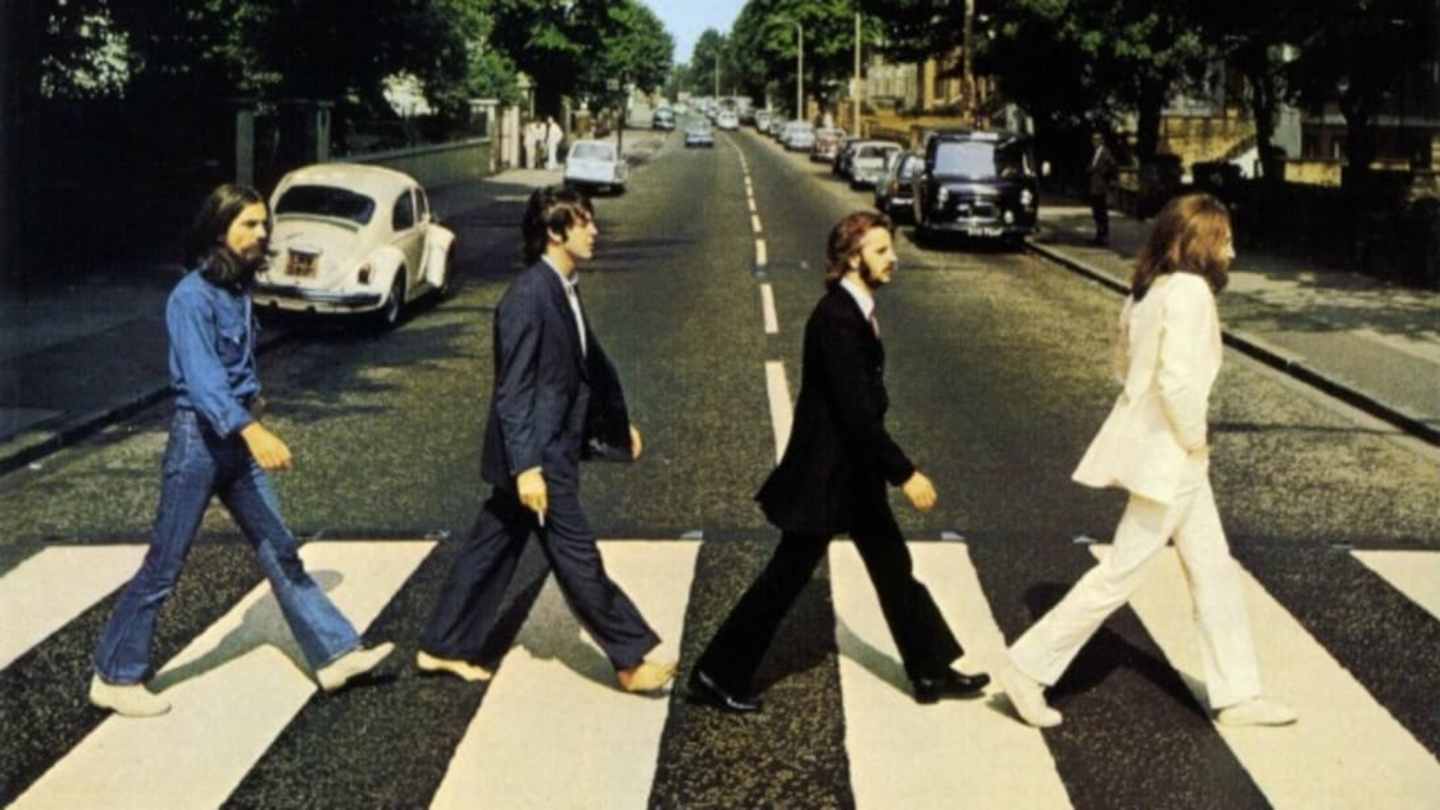The Beatles’ iconic album cover for “Abbey Road” remains one of the most recognizable images in popular culture. It captures the Fab Four crossing a busy London street, each member with a distinct expression and stance. While seemingly straightforward, the image has sparked countless debates and interpretations over the years, none more prominent than the barefoot Paul Mccartney theory.
This theory suggests that the photo holds hidden clues about Paul’s alleged death in 1967 and subsequent replacement by a look-alike. Proponents point to details like John Lennon’s white clothing symbolizing a clergyman and Ringo Starr’s black outfit representing a mourner, hinting at a somber narrative unfolding on Abbey Road. However, the truth behind Paul’s bare feet is far less dramatic.
The band was shooting the cover on a hot summer day in 1969. Mccartney simply removed his sandals for comfort, a decision that, Unbeknownst To Him, would become intertwined with conspiracy theories for decades to come. Photographer Iain Macmillan had limited time due to traffic restrictions and needed to capture the Beatles crossing the Road Quickly. The casualness of Mccartney’s barefoot stance adds an element of spontaneity to the image, further fueling its enduring cultural impact.
The Abbey Road Cover Enigma
The mystique surrounding The “abbey Road” cover stems from its seemingly innocuous details that have been dissected and analyzed for hidden meanings. Beyond Paul’s Bare Feet, fans have pointed to other elements As Potential Clues. John Lennon’s White Attire, Some Argue, represents a clergyman officiating a funeral, while Ringo Starr’s black outfit symbolizes a mourner attending the service. The placement of each Beatle, with George Harrison lagging behind, adds further fuel to the theory that he is witnessing a departure or even a death.
These interpretations often arise from the desire to find deeper meaning in Familiar Images. The human mind craves narratives and connections, even where they may not exist. The ambiguity of the photo, coupled with the Beatles’ Enigmatic Personas, creates fertile ground for speculation. It’s easy to see how seemingly mundane details like clothing color or foot placement could be transformed into symbolic representations within a conspiracy theory framework.
 Mark Wahlberg Band Of Brothers: Actors You Wont Believe
Mark Wahlberg Band Of Brothers: Actors You Wont BelieveWhile these interpretations are fascinating, it is important to remember that the Beatles themselves have never confirmed any hidden meaning behind The Abbey Road cover. The image likely captured their spirit of adventure and camaraderie on that summer day in 1969, offering a snapshot of a band at a pivotal moment in their career.
Conspiracy Theories Abound
The “Paul is dead” Conspiracy Theory, fueled by the ambiguous imagery of The “abbey Road” cover, has captured the imaginations of millions worldwide. Believers point to a multitude of supposed clues embedded in Beatles songs, Album Covers, and even public appearances as evidence of Paul’s demise. These theories range from seemingly innocuous details like reversed messages hidden within recordings to more elaborate claims involving secret societies and government cover-ups.
The enduring appeal of these conspiracy theories lies in their ability to offer alternative narratives and explanations for events that may seem mundane at First Glance. They tap into a deep human desire to uncover hidden meanings and Connect Seemingly Unrelated Dots. The Beatles’ immense popularity and mystique only amplify this effect, creating a fertile ground for speculation and debate. While there is no credible evidence to support the “Paul is dead” theory, its persistence highlights the power of storytelling and the enduring fascination with mysteries.
The internet has undoubtedly contributed to the proliferation of these theories, providing a platform for enthusiasts to share their ideas and build upon Each Other’s claims. Dedicated websites, forums, and social media groups are dedicated to dissecting Beatles songs and imagery, searching for further “proof” of Paul’s Supposed Death. Despite repeated denials from the surviving Beatles and lack of concrete evidence, the conspiracy theories continue to thrive, demonstrating the enduring power of imagination and the human need for explanations, even in the absence of facts.
Paul Mccartney: Barefoot on a Hot Day
The truth behind Paul Mccartney’s bare feet on The “abbey Road” cover is surprisingly straightforward. As with many popular urban legends, the reality is far less dramatic than the surrounding theories. During the photoshoot on a hot summer day in 1969, Mccartney simply decided to remove his sandals for comfort.
Photographer Iain Macmillan worked under strict time constraints due to traffic regulations. The Beatles had only a short window to capture the iconic image Before Traffic Resumed, adding pressure to the already hectic situation. In this context, practicality likely trumped any aesthetic considerations Regarding Footwear.
Mccartney’S Relaxed Stance, captured by Macmillan’s Keen Eye, has become an enduring symbol of the band’s creative spirit and nonchalant approach to fame. The seemingly casual decision to go barefoot added a layer of spontaneity to the photo, contributing to its timeless appeal and solidifying its place in cultural history.
Deconstructing the Symbolism
The appeal of the “Paul is dead” theory lies in its intricate web of symbolic interpretations woven into Beatles songs, Album Covers, and appearances. Proponents point to seemingly innocuous details As Hidden Clues, arguing that each element holds a deeper meaning related to Paul’s Supposed Demise. For example, they analyze lyrics for coded messages about death and funerals, and scrutinize photographs for subtle hints like reversed images or mirrored reflections. This tendency towards symbolic analysis underscores the human desire to find patterns and connections, even where they may not exist.
However, it is crucial to remember that symbols are often subjective and open To Multiple Interpretations. What one person perceives as a Coded Message About Death, another might see as a simple metaphor or artistic expression. The Beatles themselves have never confirmed any hidden meanings behind their work, leaving ample room for speculation and debate. While these interpretations can be fascinating To Explore, it’s important to approach them with a healthy dose of skepticism and recognize the limitations of interpreting complex art through a single lens.
Ultimately, the enduring allure of the “Paul is dead” theory lies in its ability to offer a compelling narrative that resonates with those seeking alternative explanations for the familiar. It taps into our fascination with mysteries and hidden truths, reminding us that sometimes the most intriguing stories are the ones we Create Ourselves.
Beyond the Myth
While the “Paul is dead” theory has undeniably captured the imagination and sparked countless discussions, it is important to remember that “Abbey Road” remains a testament to the Beatles’ Enduring Musical Legacy. The album itself stands as a masterpiece of songwriting and studio experimentation, showcasing their evolution as musicians and pushing the boundaries of popular music. Its impact continues to resonate with generations of fans worldwide, transcending the realm of conspiracy theories and solidifying its place in cultural history.
Ultimately, the power of music lies in its ability to connect with us on a deeply personal level, regardless of the surrounding narratives or interpretations. The Beatles’ Music Has Inspired Countless Artists, Sparked Social Change, and provided solace and joy to millions. “Abbey Road,” with its iconic cover and timeless songs, remains a symbol of their creative genius and enduring influence. It serves as a reminder that art can speak to us in Profound Ways, often transcending the need for complex explanations or hidden meanings.
Perhaps the most important takeaway from the “Paul is dead” story is the human fascination with mystery and the desire to find meaning in even the most seemingly Mundane Details. It highlights our innate curiosity and the power of storytelling, reminding us that sometimes the best stories are the ones we create ourselves. However, it is also essential to approach these narratives with a critical eye, separating fact from fiction and recognizing the limitations of interpreting art through a single lens.










